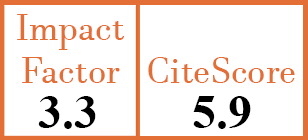Full Papers
Obesity in primary Sjögren’s disease
I. Cruz-Bautista1, D. Gómez-Velasco2, A. García-Torralba3, C.A. Aguilar-Salinas4, G. Hernandez-Molina5
- Research Unit of Metabolic Diseases, Instituto Nacional de Ciencias Médicas y Nutrición Salvador Zubirán, Mexico City, Mexico.
- Research Unit of Metabolic Diseases, Instituto Nacional de Ciencias Médicas y Nutrición Salvador Zubirán, Mexico City, Mexico.
- Department of Immunology and Rheumatology, Instituto Nacional de Ciencias Médicas y Nutrición Salvador Zubirán, Mexico City, Mexico.
- Research Unit of Metabolic Diseases, Instituto Nacional de Ciencias Médicas y Nutrición Salvador Zubirán, Mexico City; Dirección de Investigación, Instituto Nacional de Ciencias Médicas y Nutrición Salvador Zubirán, Mexico City; Tecnológico de Monterrey, Escuela de Medicina y Ciencias de la Salud, Mexico City, Mexico.
- Department of Immunology and Rheumatology, Instituto Nacional de Ciencias Médicas y Nutrición Salvador Zubirán, Mexico City, Mexico. gabyhm@yahoo.com
CER19020
Full Papers
Free to view
(click on article PDF icon to read the article)
PMID: 41004314 [PubMed]
Received: 19/06/2025
Accepted : 01/09/2025
In Press: 26/09/2025
Abstract
OBJECTIVES:
To evaluate the prevalence of obesity in primary Sjögren’s disease (SjD), and assess its association with clinical/serologic features, disease activity, damage, and sicca symptoms.
METHODS:
Transversal study that included 91 patients. We registered demographics, comorbidities, glandular/extra-glandular and serologic variables. We assessed the Schirmer-I test and non-stimulated salivary flow, and scored the cumulative ESSDAI, SSDDI and ESSPRI scores. We measured the body mass index (BMI), waist circumference (WC) and waist-to-hip ratio (WHR). We defined obesity as a BMI ≥30 kg/m2. Central obesity was defined as WC >90 cm and >80 cm; or by a WHR >0.90 and >0.85, for men and women, respectively. All patients underwent bioimpedance analysis to measure body fat mass index (FMI). An elevated/high FMI was classified as obese.
RESULTS:
According to BMI, 18 patients were obese (19.7%), while 33 (36.2%) were obese according to WC, 48 (52.7%) according to WHR, and 37(40.6%) according to FMI. When we compared obese vs non-obese patients according to BMI, the first group had a higher prevalence of anti-Ro/SSA antibodies. When we then performed the same groups comparison, but now using the WC, WHR and FMI definitions, the multivariate analysis showed an association between SSDDI and obesity.
CONCLUSIONS:
According to BMI, at least 20% of patients were obese, this prevalence increased to 40% when BIA was used, with a higher prevalence found in central obesity. Obesity did not impact the symptoms and disease activity but might be associated with damage. Our results may have implications for weight reduction in these patients.


